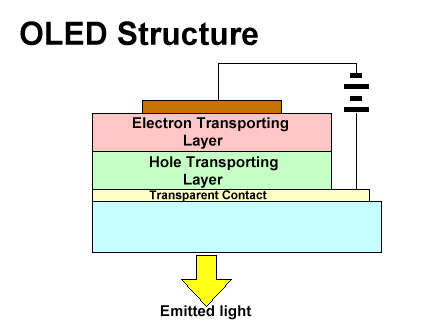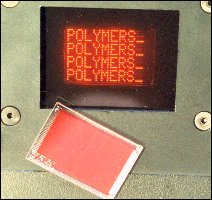Light Emitting Diode (LED) Arrays
 |
|
 |
|
|
A display device consisting of a series of carbon-based thin films sandwiched between two electrodes; one transparent (often glass). OLED technology holds promise because of the ability to tailor the organic molecules to vary color saturation, sensitivity, and other optical properties.
The operation of organic LEDs is similar to inorganic semiconductor LEDs. When two materials, one with an excess of mobile electrons the other with a deficiency, are place in close contact, a junction region is formed. When a small potential is applied, the resistance of this junction to the transport of electrons can be overcome. The motion of the electrons in an LED excites the electron on lower valance bands, causing them to move up or down into other bands. This configuration is unstable and the electrons quickly return to their previous state. This change in energy (induced by the electrons returning to their proper valence bands) causes a photon to be emitted.
Unlike crystalline semiconductors, though, these organic devices are made by depositing a thin-film layer from a solution or by a vacuum deposition process. They are not grown like a crystal, and they do no require a high-temperature process to dope them. This allows large areas to be processed, unlike typical semiconductor fabrication.
Several recent developments have stimulated significant interest in OLEDs. These include new materials and new processes. The performance of prototype systems has been very promising. It appears likely that commercial display products will appear in the near future.
OLEDs have many advantages. They are light-emitting, low-voltage,
full-color, and have an easily produced electronic structure. All other light-emitting,
flat panel technologies employ high voltages. The simple structure is clearly
not a characteristic of other popular flat panel display types.
OLED development has progressed rapidly, but there is still much work to be
done. Display lifetime remains a key issue with OLEDs. Many of the researchers
already feel confident that these problems can be overcome.